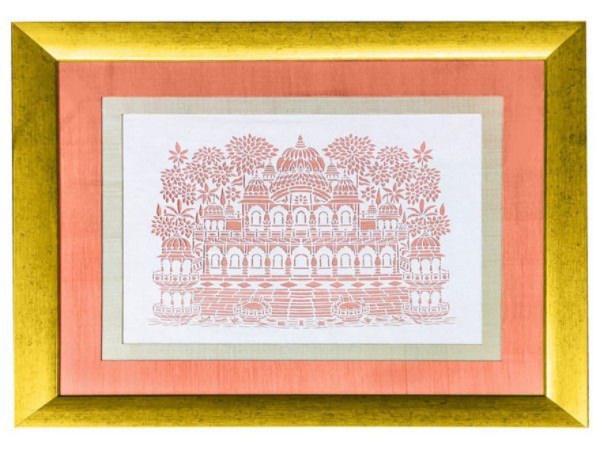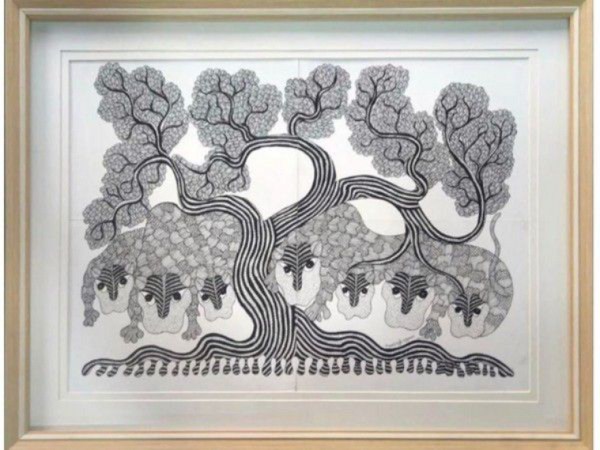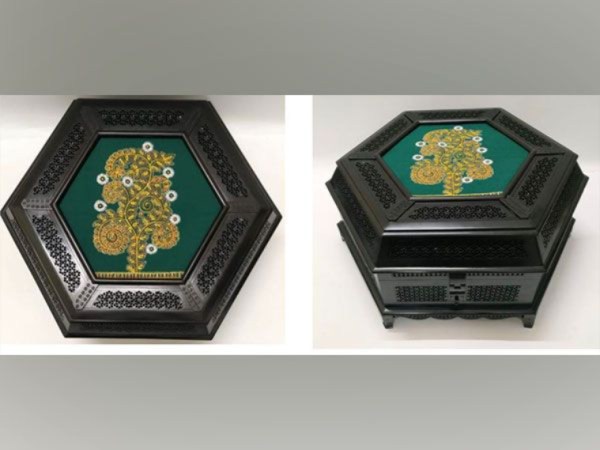ForumIAS announcing GS Foundation Program for UPSC CSE 2025-26 from 19 April. Click Here for more information.
ForumIAS Answer Writing Focus Group (AWFG) for Mains 2024 commencing from 24th June 2024. The Entrance Test for the program will be held on 28th April 2024 at 9 AM. To know more about the program visit: https://forumias.com/blog/awfg2024
News: As the India Prime Minister travelled to Tokyo to attend the Quad Summit, he carried with him gifts for leaders of the US, Australia and Japan showcasing India’s rich cultural heritage and art forms.
A look at those gifts and their cultural roots.
Sanjhi art panel for US President Joe Biden
The intricate sanjhi panel that the PM gave to US President Joe Biden is based on the theme of Thakurani Ghat, which is one of the most famous ghats on the banks of the holy river of Yamuna in Gokul.
The traditional art form, that originated out of the cult of Krishna, involves creating stencils based on incidents from the life of the deity and then hand-cutting these on thin sheets of paper using scissors.
Radha, according to Hindu mythology, used to paint sanjhi patterns on the walls for her beloved Krishna and later the gopis of Vrindavan followed suit.
Later, the form was used to make ceremonial rangolis in temples dedicated to Lord Krishna. In fact, the term ‘sanjhi’ is derived from ‘sanjh’ or dusk and is related to the practice of making rangolis in temples at dusk.
In the form of painting, sanjhi was popularised in the 15th and 16th centuries by the Vaishnava temples and was practiced by Brahmin priests.
During the Mughal period, contemporary themes were added and several families have continued to practice the form to this day. During the 2010 Commonwealth Games, the pictograms were inspired by traditional Sanjhi art.
Gond art painting for Australian PM Anthony Albanese
The art in its visual form is often traced to Jangarh Shyam, who in the 1970s and ’80s began drawing the largely oral myths and legends of the tribe onto the walls of homes in the village of Patangarh.
The art form told the tale of their gods and goddesses and as well as the flora and fauna of the deep forests in Madhya Pradesh.
As the form received global recognition, several Gond artists have gained prominence and recognition. The prominent names include Bhajju Shyam, Venkat Shyam, Durgabai Vyam, Ram Singh Urveti and Subhash Vyam, among others.
Wooden hand-carved box with a Rogan painting for Japanese PM Fumio Kishida
PM Modi gifted PM Kishida a hand-carved deep brown wooden box with a gold and white Rogan painting on a green cloth as its central motif.
Rogan is a form of cloth painting that is considered to be more than four centuries old and is primarily practised in Kutch district of Gujarat.
The word ‘rogan’ comes from Persian, meaning varnish or oil.
The craft uses paint made from boiled oil and vegetable dyes, where castor seeds are hand-pounded to extract the oil and turned into a paste by boiling.
Usually, only half the fabric is painted, and it is folded to create a mirror image. While originally only men used to practice the art form, now several women in Gujarat also pursue it.
PM Modi had also gifted a Rogan painting to the Queen of Denmark, Margrethe II, during his three-day visit to Europe earlier this month.
Source: This post is based on the article “Explained: The cultural roots and significance of PM Modi’s gifts for his Quad colleagues” published in The Indian Express on 27th May 22.







